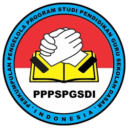The Analysis of Primary School Teachers Ability in The Application of ICT-Based Learning Media In Tarogong Kidul District
DOI:
https://doi.org/10.35568/naturalistic.v5i2.1012Keywords:
learning media, ict, ict, elementary school.Abstract
The purpose of this research is to analyze the ability of elementary school teachers in the application of learning media based on Information and Communication Technology (ICT). The main objectives are the teacher's understanding of ICT-based learning media, the ability of teachers in designing ICT-based learning media, the ability of teachers in the use of ICT-based learning media, factors that can support and inhibit the application of ICT-based learning media, and how teachers overcome obstacles in the application of ict-based learning media. The research method used by the author is mixed methods research method or mixed research method that is, by combining between qualitative and quantitative research types. The subject of this study was a public elementary school teacher in tarogong kidul area. The sample of this study was as many as 30 teachers. Instruments used in the form of questionnaires, observations and interviews. Based on the results of the instrument test obtained teacher's understanding of learning media by 85.6%, the ability of teachers in designing ICT-based learning media by 85.6%, then the ability of teachers in the use of ICT-based learning media by 85.4%. The supporting factors in terms of teacher ability are the implementation of training in the use of ICT devices and designing ICT-based learning media. From the results obtained, it can be concluded that the ability of elementary school teachers in the application of ICT-based learning media in the Tarogong Kidul area is very good.
Downloads
References
Andika, Akbar O. (2015). Minat Belajar Siswa terhadap Media Komik Berbasis Pendekatan Saintifik pada Materi Sistem Pencernaan Kelas XI SMA. BioEdu, 4(1).
Yuni, N. (2019). Hubungan Minat Baca dan Penggunaan Media Pembelajaran dengan Hasil Belajar Pendidikan Agama Islam Siswa Smp Negeri 2 Way Jepara Lampung Timur (Doctoral dissertation, IAIN Metro).
Fathurrohman, M. (2017). Belajar dan Pembelajaran Modern: Konsep Dasar, Inovasi dan Teori Pembelajaran. Garudhawaca.
Al-Tabany, T. I. B. (2017). Mendesain Model Pembelajaran Inovatif, Progresif, Dan Konteksual. Prenada Media.
Rohman, M. G., & Susilo, P. H. (2019). Peran Guru Dalam Penggunaan Media Pembelajaran Berbasis Teknologi Informasi Dan Komunikasi (TIK) Studi Kasus Di TK Muslimat NU Maslakul Huda. Jurnal Reforma, 8(1), 173-177.
Muhson, A. (2010). Pengembangan media pembelajaran berbasis teknologi informasi. Jurnal Pendidikan Akuntansi Indonesia, 8(2)
Dewi, S. Z., & Hilman, I. (2018). Penggunaan TIK sebagai Sumber dan Media Pembelajaran Inovatif di Sekolah Dasar. Indonesian Journal of Primary Education, 2(2), 48-53.
Nurdyansyah & Luly Riananda. (2016). 1137-2614-1-SM.pdf. Proceedings of International Research Clinic & Scientific Publications of Educational Technology, 929–940. Retrieved from https://journal.unesa.ac.id/index.php/jtp/article/view/1137
Mustika, E. (2013). PEMBELAJARAN SAINSBERBASIS ICTUNTUK MENINGKATKAN ICT LITERACYSISWA SEKOLAH DASAR. PEDAGOGIK (JURNAL PENDIDIKAN SEKOLAH DASAR), 1(2), 30-40.
Maria Zulfiati, H. (2015). Pengaruh Pembelajaran Ips Berbasis Ict (Information and Communications Technology) Dengan Aplikasi Lectora Inspire Dalam Meningkatkan Hasil Belajar Siswa. Jipsindo, 1(1), 39–58. https://doi.org/10.21831/jipsindo.v1i1.2878
Nursyaida, N., & Hardiyanti, A. (2020). EFEKTIVITAS PENGGUNAAN MEDIA POWER POINT TERHADAP HASIL BELAJAR IPS KELAS V SD 128 TURUNGAN BERU KECAMATAN HERLANG KABUPATEN BULUKUMBA. JRPD (Jurnal Riset Pendidikan Dasar), 3(1), 71-76.
Creswell, J. W. (2014). RESEARCH DESIGN, Qualitative, Quantitative, and Mixed Methods Approaches atau RESEARCH DESIGN: Pendekatan Metode Kualitatif, Kuantitatif, dan Campuran, Terjemahan Achmad Fawaid & Rianayati Kusmini P. 2016. Yogyakarta: Pustaka Pelajar.
Ashari, L. H., Lestari, W., & Hidayah, T. (2016). Instrumen Penilaian Unjuk Kerja Siswa Smp Kelas Viii Dengan Model Peer Asssessment Berbasis Android Pada Pembelajaran Penjasorkes Dalam Permainan Bola Voli. Journal of Research and Educational Research Evaluation, 5(1), 08-20.
Elpira, N., & Ghufron, A. (2015). Pengaruh penggunaan media powerpoint terhadap Minat dan hasil belajar ipa siswa kelas IV SD. Jurnal Inovasi Teknologi Pendidikan, 2(1), 94-104.
Lestari, I. D. (2018). Peranan guru dalam penggunaan media pembelajaran berbasis information and communication technology (ICT) di SDN RRI cisalak. SAP (Susunan Artikel Pendidikan), 3(2).
Sugiyono, P. (2015). Metode penelitian kombinasi (mixed methods). Bandung: Alfabeta.
Budiaji, W. (2013). Skala pengukuran dan jumlah respon skala likert. Jurnal ilmu pertanian dan perikanan, 2(2), 127-133.
Yusup, F. (2018). Uji validitas dan reliabilitas instrumen penelitian kuantitatif. Tarbiyah: Jurnal Ilmiah Kependidikan, 7(1).
Rahardjo, M. (2011). Metode pengumpulan data penelitian kualitatif.
Yusrizal, Y., Safiah, I., & Nurhaidah, N. (2017). Kompetensi Guru Dalam Memanfaatkan Media Pembelajaran Berbasis Teknologi Informasi Dan Komunikasi (TIK) Di SD Negeri 16 Banda Aceh. Jurnal Ilmiah Mahasiswa Pendidikan Guru Sekolah Dasar, 2(2).
Mugara, R. (2011). Meningkatkan kompetensi guru melalui penguasaan teknologi informasi dan komunikasi (TIK). Prodi Pengembangan Kurikulum. Universitas Pendidikan Indonesia. Sunan Kalijaga: Yogyakarta.
Wijayanti, I. D. (2011). Peningkatan Pendidikan Berbasis ICT. UIN Sunan Kalijaga: Yogyakarta.
Downloads
Published
How to Cite
Issue
Section
License
Copyright (c) 2021 NATURALISTIC : Jurnal Kajian Penelitian Pendidikan dan Pembelajaran

This work is licensed under a Creative Commons Attribution-ShareAlike 4.0 International License.
Copyright of Journal Naturalistic : Jurnal Kajian Penelitian Pendidikan dan Pembelajaran (e-ISSN:2548-8589, p-ISSN:2528-2921).
Open Access Policy
This journal provides immediate open access to its content on the principle that making research freely available to the public supports a greater global exchange of knowledge.
This journal is open access journal which means that all content is freely available without charge to users or / institution. Users are allowed to read, download, copy, distribute, print, search, or link to full text articles in this journal without asking prior permission from the publisher or author. This is in accordance with Budapest Open Access Initiative.










